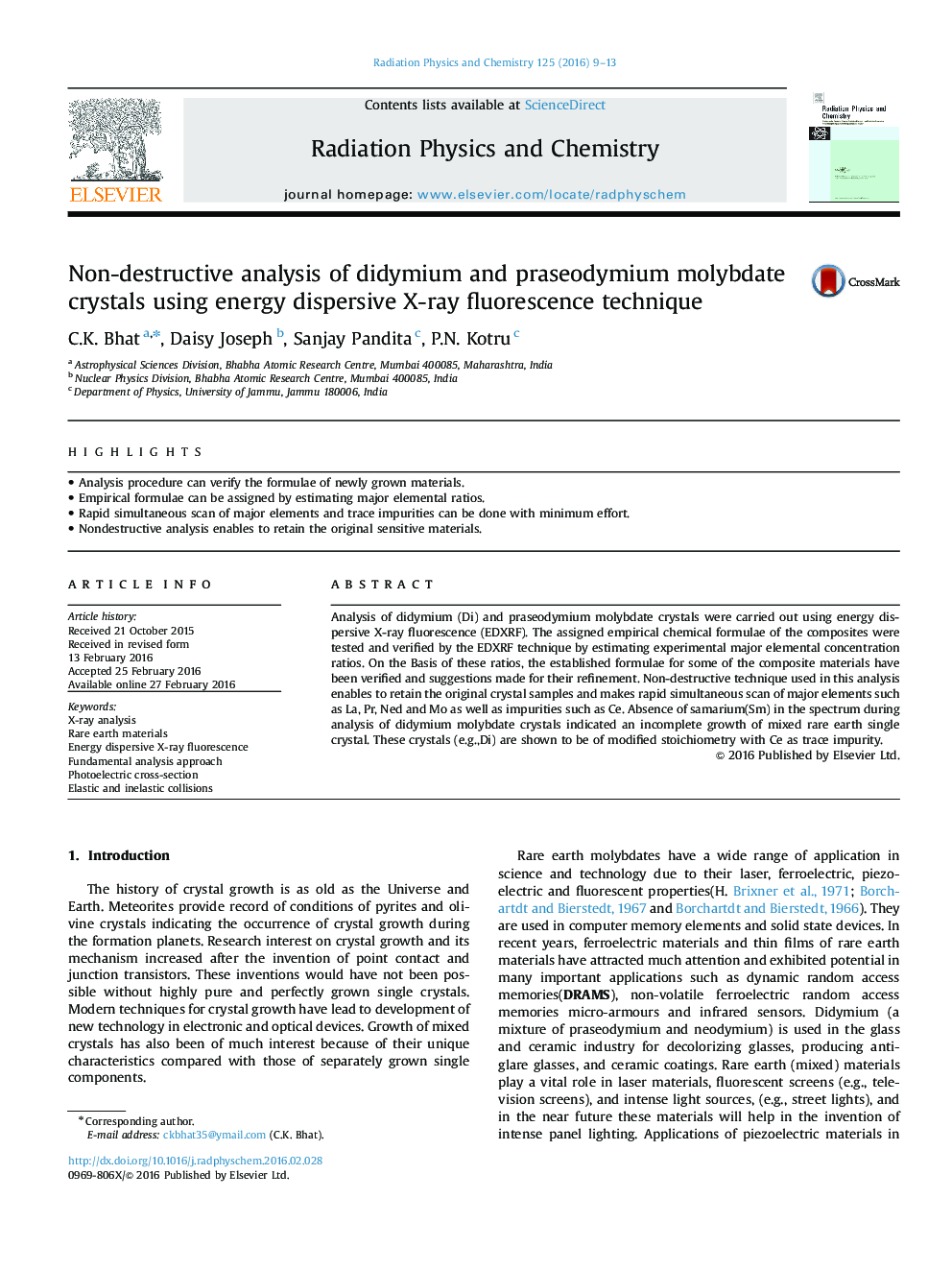| Article ID | Journal | Published Year | Pages | File Type |
|---|---|---|---|---|
| 1885847 | Radiation Physics and Chemistry | 2016 | 5 Pages |
•Analysis procedure can verify the formulae of newly grown materials.•Empirical formulae can be assigned by estimating major elemental ratios.•Rapid simultaneous scan of major elements and trace impurities can be done with minimum effort.•Nondestructive analysis enables to retain the original sensitive materials.
Analysis of didymium (Di) and praseodymium molybdate crystals were carried out using energy dispersive X-ray fluorescence (EDXRF). The assigned empirical chemical formulae of the composites were tested and verified by the EDXRF technique by estimating experimental major elemental concentration ratios. On the Basis of these ratios, the established formulae for some of the composite materials have been verified and suggestions made for their refinement. Non-destructive technique used in this analysis enables to retain the original crystal samples and makes rapid simultaneous scan of major elements such as La, Pr, Ned and Mo as well as impurities such as Ce. Absence of samarium(Sm) in the spectrum during analysis of didymium molybdate crystals indicated an incomplete growth of mixed rare earth single crystal. These crystals (e.g.,Di) are shown to be of modified stoichiometry with Ce as trace impurity.
